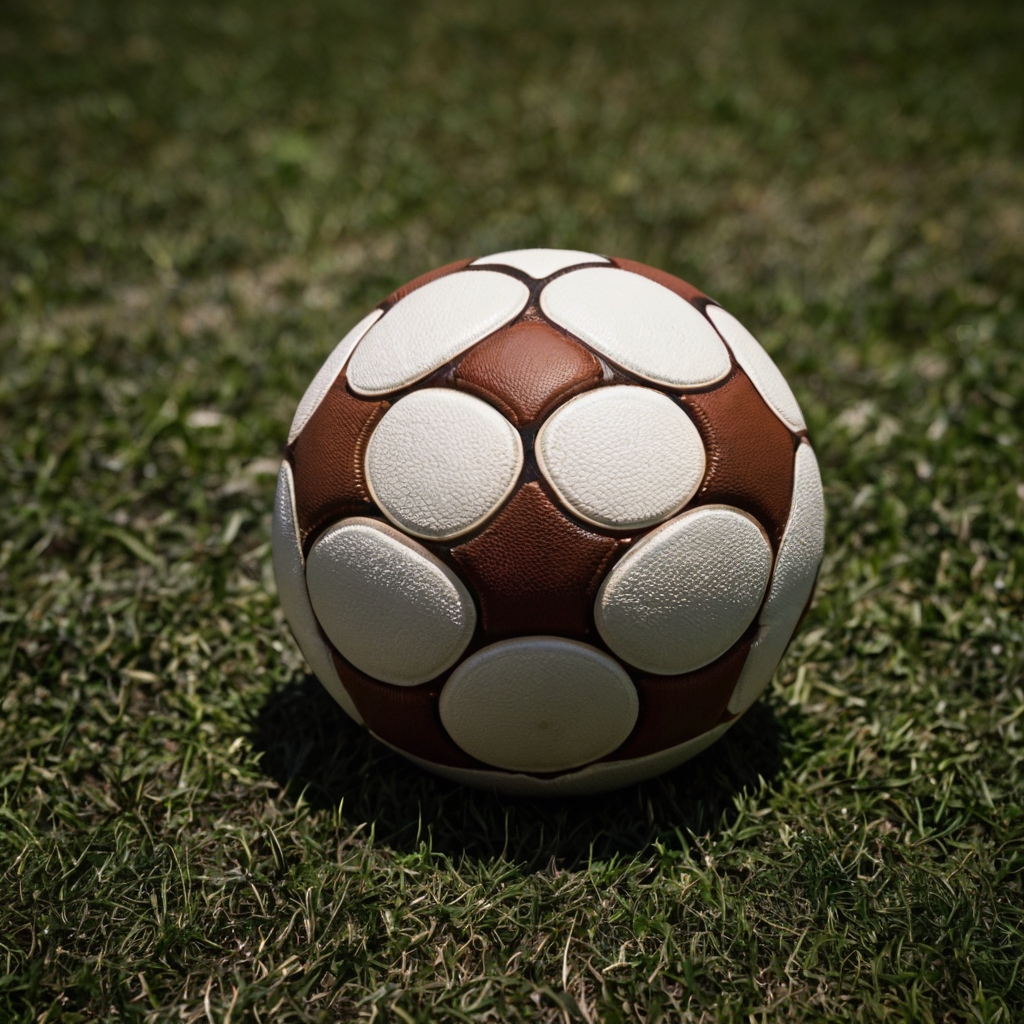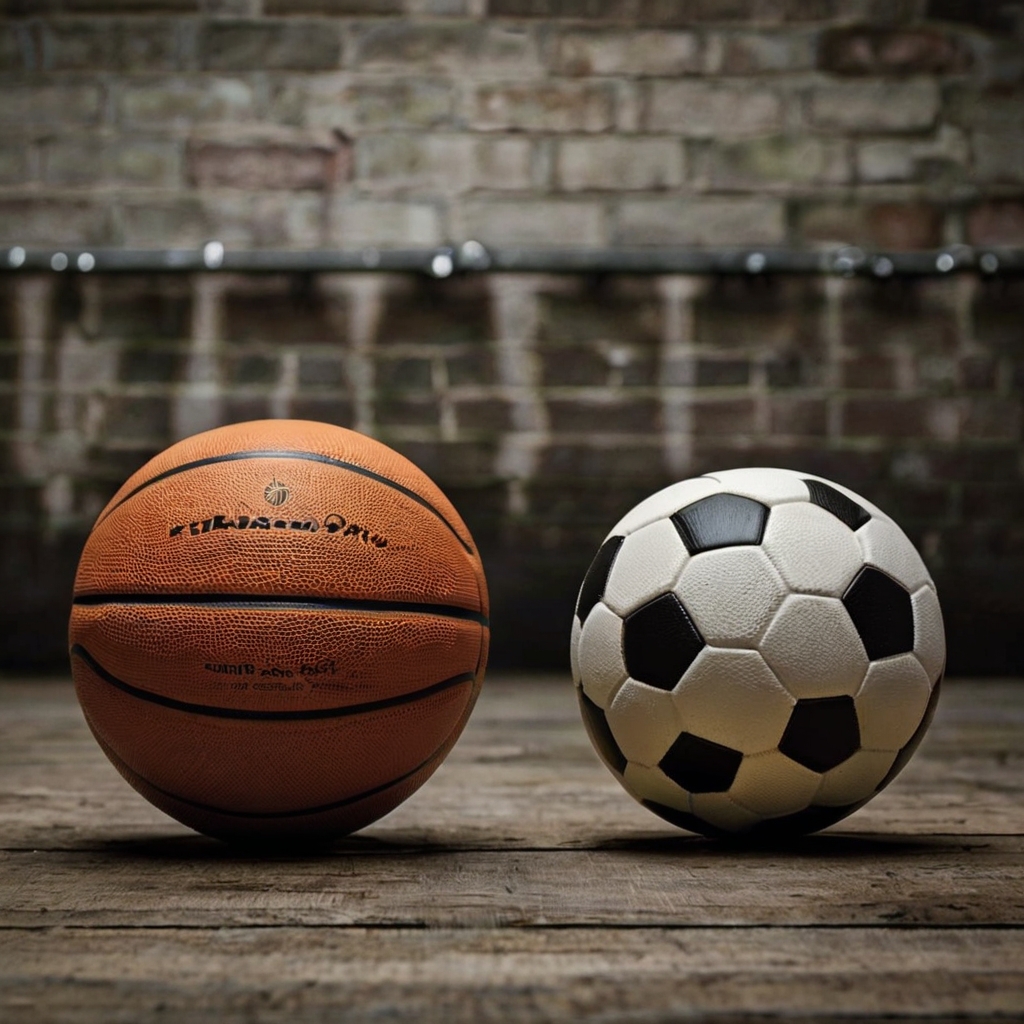Soccer stands as the world’s most popular sport with over 4 billion fans worldwide—but the debate between soccer and basketball continues to spark heated discussions among sports fans. Soccer’s global reach spans more than 200 countries, and the FIFA World Cup draws billions of viewers every four years. The sport’s worldwide dominance speaks for itself. Basketball brings its own excitement with high-scoring games and dynamic action that many fans find thrilling.
The battle between soccer and basketball comes down to several key factors that make each sport special. Soccer demands incredible stamina, with players covering 7-9 miles in a single game. Basketball players, who average 6 feet 7 inches tall, show off their explosive athleticism on a smaller court. A simple ball and open space are all you need to play soccer, which helps explain its massive worldwide appeal. Basketball continues to gain international popularity too. This piece looks at both sports from different angles to help you figure out which one matches your style and situation better.

Table of Contents
Popularity and Global Reach
The world’s most beloved games showcase a fascinating competitive dynamic in the global sports arena. A comparison between soccer and basketball’s reach provides vital context to determine which sport holds the upper hand.
Soccer’s worldwide dominance
Soccer reigns as the undisputed global champion with 3.5-4 billion fans worldwide. Nearly half the world’s population follows this sport, making it the most played and watched game on the planet. The 2022 Qatar FIFA World Cup demonstrated soccer’s exceptional appeal. The tournament reached about 5 billion people globally, and the final alone drew 1.5 billion viewers.
Soccer’s simple requirements make it accessible to more people. Players need just a ball to play, which allows the game to thrive in wealthy cities and remote villages. The sport also surpasses gender barriers. Nielsen research confirms it as women’s most popular sport globally.
Soccer’s traditional strongholds remain in Europe and Latin America, yet the sport continues to gain ground in North America and parts of Asia. The Major League Soccer (MLS) has grown substantially in the United States, and youth participation has reached record levels. The 2026 World Cup, hosted jointly by the USA, Mexico, and Canada, will likely strengthen soccer’s North American influence.
Basketball’s growing international presence
Basketball has become the second most popular team sport globally. Fan numbers range from 800 million to 3.3 billion followers across different sources. The NBA leads basketball’s global presence, attracting followers well beyond United States borders.
Olympic competitions have stimulated basketball’s worldwide growth substantially. The 1992 “Dream Team” created worldwide interest that led to today’s NBA roster of 125 international players from 43 countries. The 2024 Paris Olympics maintained this momentum, as basketball ranked among the four most-watched Olympic sports.
Global interest in basketball has grown 10% since 2019. Countries like Indonesia, the Philippines, China, and the UAE show remarkable growth alongside European markets such as Spain, Germany, and the UK. France experienced a 177% surge in NBA engagement after Victor Wembanyama joined the league.
What is more popular: soccer or basketball?
Soccer clearly leads in numerical advantage when compared to basketball. Soccer maintains about 3.5 billion fans while basketball claims 800 million to 2.4 billion, depending on measurement methods. FIFA World Cup viewership consistently exceeds the NBA Finals by billions.
Basketball shows impressive growth among younger audiences. The NBA attracts younger viewers compared to average sports fans and ranks first among the 18-34 age group at 43% in the US. Basketball stands as the second most popular sport globally behind football for fans aged 16-69.
Regional preferences paint an interesting picture in the soccer vs basketball landscape. Soccer dominates Europe, South America, and Africa, while basketball thrives in North America and parts of Asia. The Philippines stands out as basketball’s stronghold, where 75% of sports fans follow the game.
Both sports continue to expand their global reach. The question of superiority between soccer and basketball depends largely on regional context, demographic factors, and specific comparison metrics.
Physical Demands and Athletic Skills
Athletes who play team sports show distinct physical traits. Their bodies adapt differently based on their sport’s demands, and specialized training shapes their abilities for best performance.
Endurance in soccer vs explosiveness in basketball
Soccer players need exceptional aerobic endurance. They run 7-10 miles in a 90-minute game with few breaks. The aerobic energy system handles about 90% of the energy needed during play. Players build outstanding cardiovascular fitness to stay effective throughout long matches.
Basketball focuses on explosive power and quick movements. Players need bursts of speed, agility, and fast direction changes that use the anaerobic energy system. A typical game includes about 1,000 movement changes every 2 seconds. This creates unique physical demands. Soccer builds lasting stamina, while basketball develops explosive athleticism and quick recovery between intense bursts.
Footwork vs hand-eye coordination
These sports need different technical skills based on how players interact with the ball. Soccer success depends on excellent footwork and lower-body coordination. Players must develop precise foot-eye coordination to control the ball while watching the field. This skill helps athletes make complex plays under pressure at different speeds.
Basketball relies on hand-eye coordination as its core skill. Studies show basketball players have better near point of joining, positive fusional vergences, and higher eye-hand coordination scores than non-athletes. These visual-motor abilities let players catch, pass, and shoot with precision while adapting to quick game changes. Players need exact hand movements and spatial awareness to direct the ball and move around the court.
Injury risks and physical toll
Injury patterns show interesting contrasts between these sports. Both basketball and soccer have similar injury rates at 2.69 per 10,000 hours. But population-based numbers tell a different story. Basketball tops the list at 1.49 per 1,000 people, while soccer sits lowest at 0.43.
Each sport has its unique injury types. Strains and sprains lead the list in both sports. Soccer players get more fractures (19.3%) than basketball players (14.5%). Internal organ injuries happen more in soccer (3.1%) compared to basketball’s 1.3%.
Female athletes in both sports get hurt more often than males when measured by playing time. Basketball players mostly hurt their lower body. Soccer players face higher ACL tear risks, and female soccer players show the highest concussion/TBI rate at 11.5%.
The better sport choice between soccer and basketball depends on your athletic strengths and physical makeup.
Strategy and Game Complexity
Team sports rely heavily on strategic complexity as their intellectual foundation. Each game needs its own mental approach and tactical awareness. Learning about these differences helps us understand what makes soccer better than basketball.
Tactical depth in soccer formations
Soccer’s strategic complexity comes from its variety of formations. Teams use many tactical systems like 4-3-3, 4-4-2, or 3-5-2, each with its own advantages. Soccer teams need eleven players to coordinate on a bigger field, which makes it nowhere near as simple as basketball’s five-player lineups.
To name just one example, the 4-3-3 formation creates triangle-shaped passing options that make possession-based play easier. This setup gives teams more players in midfield to help you build attacks and break through defensive lines. The classic 4-4-2 provides a stable defense with two connected strikers.
Soccer managers adapt their tactics during matches to exploit weak spots in the opposition. Players must process an ever-changing field and decide within seconds whether to pass, dribble, or shoot. Former Barcelona coach Pep Guardiola says formations are “nothing more than phone numbers” because players move so freely during actual gameplay.
Playmaking and time management in basketball
Basketball’s strategy is different because of its faster pace and smaller court. Basketball players change their movement patterns about 1,000 times per game – roughly every 2 seconds. This creates an environment where players just need to make quick decisions about passing, shooting, or driving to the basket.
Time management is a vital strategic element unique to basketball. Teams must balance scoring efficiency with the game clock and shot clock. Coaches face tough choices in final minutes – whether to foul to stop the clock or decide between attempting a two-pointer or three-pointer.
Point guards represent basketball’s playmaking demands. They read defenses and pick the best options during live play. The best playmakers develop court vision by scanning for teammates as soon as they get the ball instead of looking down while dribbling. Experts believe players can develop this skill through specific drills that focus on peripheral vision and awareness.
Which sport requires more mental agility?
The most important cognitive processing happens differently in both sports. Soccer players must maintain tactical awareness with more teammates across a bigger field, which needs excellent spatial thinking. Players must adapt to changing situations without many breaks or timeouts.
Basketball has more frequent stops where coaches call specific plays during timeouts. Players have less time to plan their moves compared to soccer because of the faster pace.
The better sport for mental demands depends on specific cognitive strengths. Soccer needs better long-term strategic thinking and awareness of positions across more space with more players. Basketball requires quicker decisions with minimal thinking time.
Studies show that basketball and soccer boost cognitive flexibility by promoting brain growth through physical activity. Both sports improve visual processing speed – which helps track teammates and opponents. The better sport for developing mental skills largely depends on which cognitive abilities you want to improve.

Accessibility and Equipment Needs
Money often decides which sports kids can play. The cost becomes a vital factor in choosing between soccer and basketball.
Cost and availability of gear
You don’t need much money to start playing basketball. A simple basketball costs $20-$30. The average family pays around $427 each year for basketball. This breaks down to $86 for registration, $74 for equipment, $114 for travel, and $61 for lessons.
Soccer costs a bit more, with families spending about $537 yearly. The money goes to registration ($158), equipment ($125), travel ($107), and lessons ($66). Soccer balls are cheap at $15-$30, but extras like shin guards add to the total cost.
Parents spend about $883 each year on their child’s main sport. Both soccer and basketball are cheaper options compared to ice hockey ($2,583) or skiing ($2,249).
Space and infrastructure requirements
Basketball works great in busy cities. A regulation court needs 94 feet by 50 feet, and courts are easy to find in parks, schools, and community centers.
Soccer needs much more room. A standard field is bigger – just the penalty box takes up 132 feet by 54 feet. Yes, it is so big that a full basketball court could fit inside a soccer penalty area with space left over.
This size difference matters. Basketball courts are easier to find in cities. Players can enjoy basketball indoors all year, while soccer players often can’t play during harsh winters.
Which sport is easier to start playing?
Soccer wins when it comes to getting started. All you need is a ball and some space, which makes the sport perfect for people from any background. This simple setup helped soccer become the world’s favorite sport.
Basketball needs both a ball and a hoop. Public courts exist in many places, but finding good places to play can be tough in rural areas.
Both sports rank among the easiest to get into. Soccer has a small edge for beginners or people in communities with fewer resources because it needs less equipment.
Cultural Impact and Fan Experience
Fan culture creates the emotional heartbeat of sports and shapes their wider social impact beyond simple games. The passionate communities surrounding soccer and basketball give an explanation about which sport resonates more with people.
Global events: World Cup vs NBA Finals
The FIFA World Cup represents humanity’s most-watched sporting spectacle. The 2022 tournament captivated approximately 5 billion viewers globally, and the final alone drew 1.5 billion viewers. These numbers dwarf the NBA Finals’ viewership, which reached its peak at 17.8 million during Game 5 of the 2023 finals. The Women’s World Cup success tells an even more compelling story. The 2023 tournament attracted 2 billion viewers – nearly double the 1.12 billion from 2019.
Fan passion and stadium atmosphere
Soccer and basketball create two completely different stadium environments. European football matches come alive with coordinated chants and songs throughout the game. Massive visual displays called “tifos” blanket entire sections. Soccer supporters see themselves as active participants rather than passive spectators. They create what analysts call a “five senses” atmosphere through sight, sound, touch, smell, and taste.
Basketball arenas take a different approach. They rely on manufactured entertainment elements like cheerleaders, halftime shows, and constant visual distractions. One observer points out that “American sporting events go way overboard bringing in all these distractions trying to build stadium atmosphere”.
Why soccer fans are considered the most loyal
Soccer fans show remarkable loyalty, especially when times get tough. Oxford University researchers found that intense experiences of significant wins and losses create stronger bonds between fans and their club. These moments become “self-shaping” experiences where personal identity merges with club identity.
Long-term studies reveal an interesting pattern. Teams facing relegation to lower divisions don’t see decreased fan satisfaction. Instead, fans’ self-connection and commitment grow stronger. Soccer fandom represents more than just support – it becomes an expression of identity and life attitude. Supporters stand by their clubs “in both good and bad times”.
The Final Verdict: Which Sport Reigns Supreme?
A deep look at soccer and basketball shows that the better choice depends on what you want from a sport. Each game has its own appeal that draws athletes and fans worldwide.
Soccer rules the world with about 3.5 billion fans, while basketball has between 800 million to 2.4 billion followers. The FIFA World Cup pulls in a massive 5 billion viewers, showing soccer’s huge cultural reach. But basketball keeps growing fast, especially with younger fans. The NBA’s smart marketing has worked wonders here.
These sports build different types of athletes. Soccer players build amazing stamina and run 7-10 miles each game. They also develop great foot-eye coordination. Basketball players focus on quick bursts of power and hand-eye coordination. Both sports have the same injury rate at 2.69 per 10,000 hours, but the types of injuries are quite different.
The strategy in each sport tells an interesting story. Soccer uses eleven-player formations to create complex plays on big fields. Basketball needs quick thinking in a smaller space with tighter deadlines. Each game tests different skills – soccer needs great positioning while basketball demands split-second choices.
Equipment needs set these sports apart too. Soccer just needs a ball, making it the easiest team sport to play anywhere. Basketball needs a hoop, but you can play it indoors all year round – that’s a big plus in some places.
The fans make each sport special in their own way. Soccer fans see themselves as part of the game. They create amazing atmospheres with their chants and displays. Basketball arenas buzz with energy too, but they rely more on planned entertainment.
The choice between soccer and basketball comes down to what matters to you. You might love soccer if you want a global community, simple equipment, and deep fan traditions. Basketball could be your game if you enjoy fast scoring, explosive moves, and indoor play options. Both sports help you grow physically, think strategically, and join passionate communities that go beyond just playing a game.
Here are some FAQs about what is better soccer or basketball:
Is soccer or basketball more popular?
Soccer is significantly more popular globally than basketball, with an estimated 4 billion fans worldwide (what is better soccer or basketball). While basketball has strong popularity in North America and parts of Asia, soccer dominates in Europe, Africa, South America and most other regions (soccer vs basketball). The FIFA World Cup attracts nearly half the world’s population, far surpassing basketball’s biggest events (what sport is better soccer or basketball).
What is the #1 sport in the world?
Soccer (known as football outside North America) is universally recognized as the world’s #1 sport (what is better basketball or soccer). With its simple equipment requirements and global accessibility, soccer has become deeply ingrained in cultures worldwide (what sport is better basketball or soccer). The sport’s massive following and international competitions like the World Cup solidify its top position (soccer vs basketball).
Is it harder to play basketball or soccer?
Both sports present unique challenges – basketball requires exceptional hand-eye coordination and vertical athleticism (what is a better sport soccer or basketball). Soccer demands incredible footwork, endurance and spatial awareness across large fields (what is better soccer or basketball). The difficulty depends on individual skills, though soccer’s continuous play and running make it physically grueling while basketball’s precision shooting is technically demanding (soccer vs basketball).
Is basketball better or football?
This depends on personal preference – basketball offers fast-paced scoring and constant action (what is better basketball or soccer). American football provides strategic complexity and explosive physicality, while global football (soccer) delivers flowing gameplay and international appeal (what sport is better soccer or basketball). Each sport excels in different areas, making “better” subjective to what aspects fans value most (soccer vs basketball).
Is basketball the #1 sport?
While basketball is among the world’s most popular sports, it ranks behind soccer in global popularity (what is a better sport soccer or basketball). Basketball is particularly dominant in the U.S. and has grown internationally through the NBA’s efforts (what sport is better basketball or soccer). However, soccer’s universal appeal and participation numbers maintain its position as the true #1 global sport (soccer vs basketball).
What is the most difficult sport?
Determining the most difficult sport is subjective, but boxing, gymnastics and ice hockey are often considered among the toughest (what is better soccer or basketball). Soccer and basketball both present extreme physical and technical demands – soccer with its endurance requirements and basketball with its precision skills (what is better basketball or soccer). The difficulty depends on individual athletes’ strengths and which sport’s specific challenges they find most demanding (soccer vs basketball).


